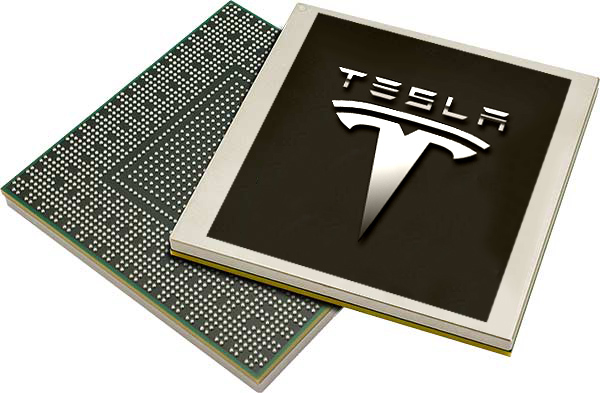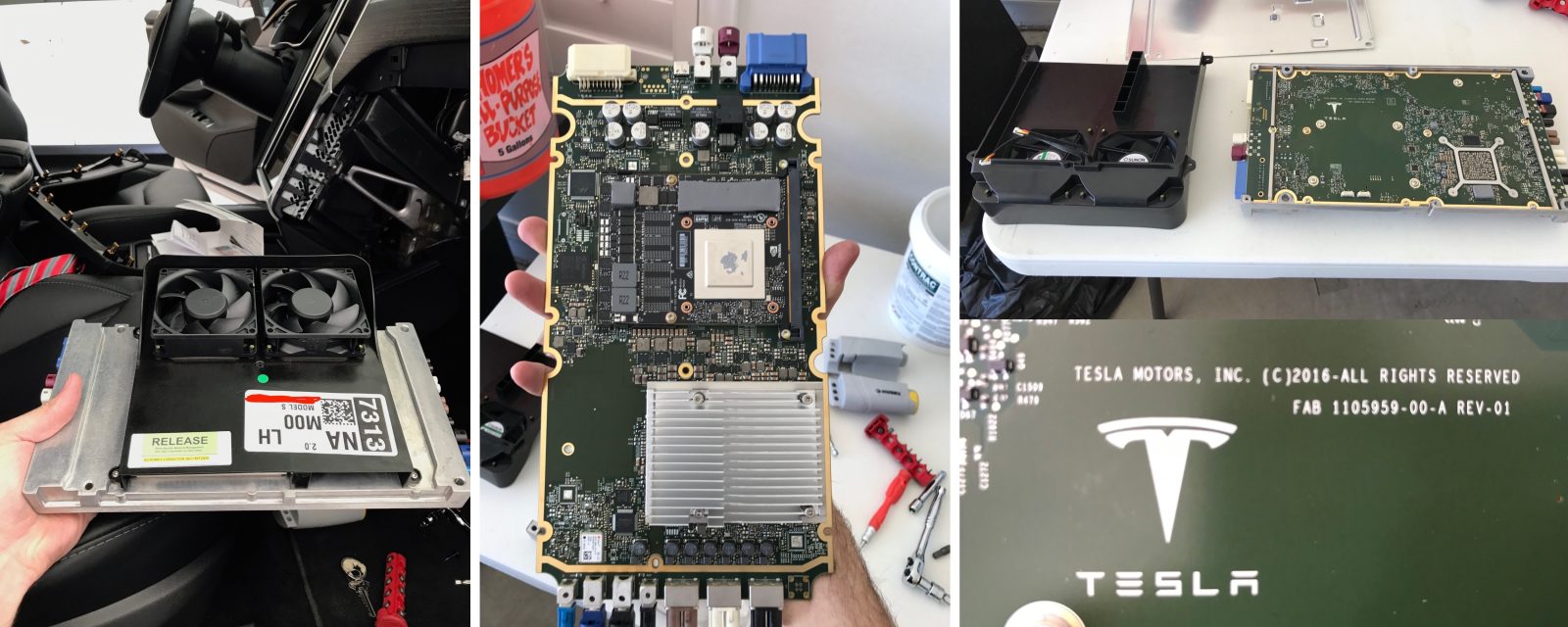As Tesla begins an aggressive round of testing for its full self-driving test program with its own employees, it’s clear that Hardware 3 has rapidly evolved and is now ready for real-life road conditions.

The difference between version 3.0 of the Tesla hardware is chiefly in the internals, specifically the new AI chip that the company has been working on for a while now. They recruited top talent from Apple, AMD and other companies to design the chip, and the new tests indicate that it could be close to the final release as part of the latest iteration of Tesla’s on-board computer hardware.
The incentive to employees is that the $8,000 charge for the FSD package will be waived. In an email to employees outlining the terms of the offer, he throws in an ultimatum saying “this is the last time the offer will be made.”
We already know that Hardware 3 is going to be a free upgrade for anyone who has already purchased the FSD package, which requires the Enhanced Autopilot or EAP package. Recently, however, Tesla removed the FSD option from its website’s Design Studio because of confusion surrounding the feature. With extensive testing going on, they could make it available once again next year in preparation for a late 2019 release.
Why Tesla Needs Greater Positioning Accuracy
Along these lines, Tesla has also been focusing on the accuracy of GPS using a newly patented positioning technology. Why is greater accuracy essential at this point when traditional GPS systems are now? To offer a bit of background, here’s an excerpt from GPS.gov on GPS accuracy:
“GPS satellites broadcast their signals in space with a certain accuracy, but what you receive depends on additional factors, including satellite geometry, signal blockage, atmospheric conditions, and receiver design features/quality.
“For example, GPS-enabled smartphones are typically accurate to within a 4.9 m (16 ft.) radius under open sky (VIEW SOURCE AT ION.ORG). However, their accuracy worsens near buildings, bridges, and trees.
“High-end users boost GPS accuracy with dual-frequency receivers and/or augmentation systems. These can enable real-time positioning within a few centimeters, and long-term measurements at the millimeter level.”
As a “high-end user”, Tesla is now exploring proprietary positioning technology to go extremely granular on accuracy. The reason this is critical to the FSD package is because a Tesla – or any car – on full self-driving mode will need to constantly communicate with its surroundings and with other cars. The greater the accuracy, the better control the system will have over how the car reacts to vehicles, medians, lanes, traffic signs, etc.
It is also important from a localization perspective. To elaborate, IoT systems like dynamic toll charging need to know the exact location of a car in order to work more effectively.
“..it is not just the car itself that needs to know its location for navigation, but also others outside the car. Ride-sharing apps like Uber and Lyft, car-sharing, usage-based insurance apps, dynamic toll charging, and parking apps all depend on knowing where the car is at all times.”
Tesla’s Autopilot Hardware 3 comprises machine learning algorithms based on neural networks, and such systems require less granular mapping of the environment because they learn on the go if they’re in a new location they’ve never seen before. This is where real self-driving capability comes in – not just knowing your own roads but ones you’ve never travelled before. Like if a human driver were in unfamiliar terrain for the very first time. The driver would be relatively cautious because of unknown factors that might require his attention.
Students at MIT are taking a different approach to this. They’re developing a system that’s more based on real-time, on-site data capture and processing rather than maps, which tend to require high internet speeds and massive servers for computational purposes.
“The system doesn’t need accurate measurements to the curb, the lane markings, and roadside features like sidewalks, trees, and buildings. Instead, it merely consults a very minimalist map, then uses its sensors to see its way to a point up ahead, a “waypoint” that the system chooses for being in the general direction of the ultimate goal. That is, the system does pretty much what a human driver would do when feeling his way forward in an unfamiliar place.”
But Tesla already has a huge advantage that most other company, including Google spin-off Waymo, don’t, and this is the massive database of road information collected by Tesla’s large and growing road fleet. Its customers are often unwitting beta testers, in a sense. Every Tesla with Autopilot engaged sends a ton of information back to the company’s servers, and this information can be used to maintain live maps that are constantly being updated.
The biggest problem for Tesla right now is reliability. Autopilot hardware 2 and 2.5 are now stretched to their physical limits, but Autopilot Hardware 3 will be far more powerful in that it can process a lot of the information on-board. That means lower latency and quicker reaction times.
The system still needs to be fully vetted and tested before it is released to the public, which is exactly what Tesla is doing now by encouraging its employees to test it out on their cars. It’s faster that way, and it will help them achieve the early-2019 release time frame for upgrading cars to Hardware 3 containing the new chip.
What Does Full Self-Driving Entail?
The end objective for Tesla and every other company in the autonomous space is to develop a system that will replace a better-than-average human driver in every aspect.
That means the ability to drive under numerous real-world conditions: low visibility, heavy rain or snow, new locations, unmarked roadways, jaywalking pedestrians, swerving cyclists, unexpected detours and so on.
Musk expects to have a fully autonomous system by the end of 2019, but Hardware 3 will probably be ready in the next few months. The aggressive testing will not only provide valuable test miles for Tesla to study and learn from, but it will also give them a huge amount of data to constantly keep upgrading the Autopilot software until it’s ready for public use.
Will Hardware 3 and the neural network-based system justify the FSD claim that Tesla is making? Technically, it will. The SAE definitions for various levels of autonomy are ill-defined.
For example, Level 2 is a “hands off” level, but it clearly states that “The driver must monitor the driving and be prepared to intervene immediately at any time if the automated system fails to respond properly. The shorthand “hands off” is not meant to be taken literally. In fact, contact between hand and wheel is often mandatory during SAE 2 driving, to confirm that the driver is ready to intervene.”
Level 3 is the “eyes off” level, which states: “The driver can safely turn their attention away from the driving tasks, e.g. the driver can text or watch a movie. The vehicle will handle situations that call for an immediate response, like emergency braking.” However, it goes on to say: “The driver must still be prepared to intervene within some limited time, specified by the manufacturer, when called upon by the vehicle to do so.”
Level 4, on the other hand, is what we believe Tesla is referring to as full self-driving. Here’s the definition:
“Level 4 (“mind off”): As level 3, but no driver attention is ever required for safety, e.g. the driver may safely go to sleep or leave the driver’s seat. Self-driving is supported only in limited spatial areas (geofenced) or under special circumstances, like traffic jams. Outside of these areas or circumstances, the vehicle must be able to safely abort the trip, e.g. park the car, if the driver does not retake control.”
That means the car either drives itself or parks itself safely, all without driver intervention. Enhanced Autopilot, or EAP, already has many of the features required for this level of automation. FSD will fill all those gaps and decisively bring Tesla into Level 4 territory. If they succeed within the projected timeline, Tesla could become the world’s first auto maker with a fully autonomous (by SAE standards) fleet on the road in 2019.
Waymo is still struggling to bring its own system live, with many hurdles yet to be crossed. It is now a race between Tesla and Waymo. Nobody else seems to have the technology to handle even Level 4, let alone Level 5, which won’t even require driver controls.
Tesla has every advantage, including pre-installed hardware on tens of thousands of its EVs, if not more. For Waymo, it will have to be in partnership with auto companies, ride-hailing tech firms and anyone else willing to retro-fit their fleet with Waymo hardware. It’s already happening, but Tesla has a clear logistical advantage here as well.
The race to full autonomy is on, and it is exciting as much as surprising that a functional Level 4 automobile could be road-ready as soon as the end of 2019.



